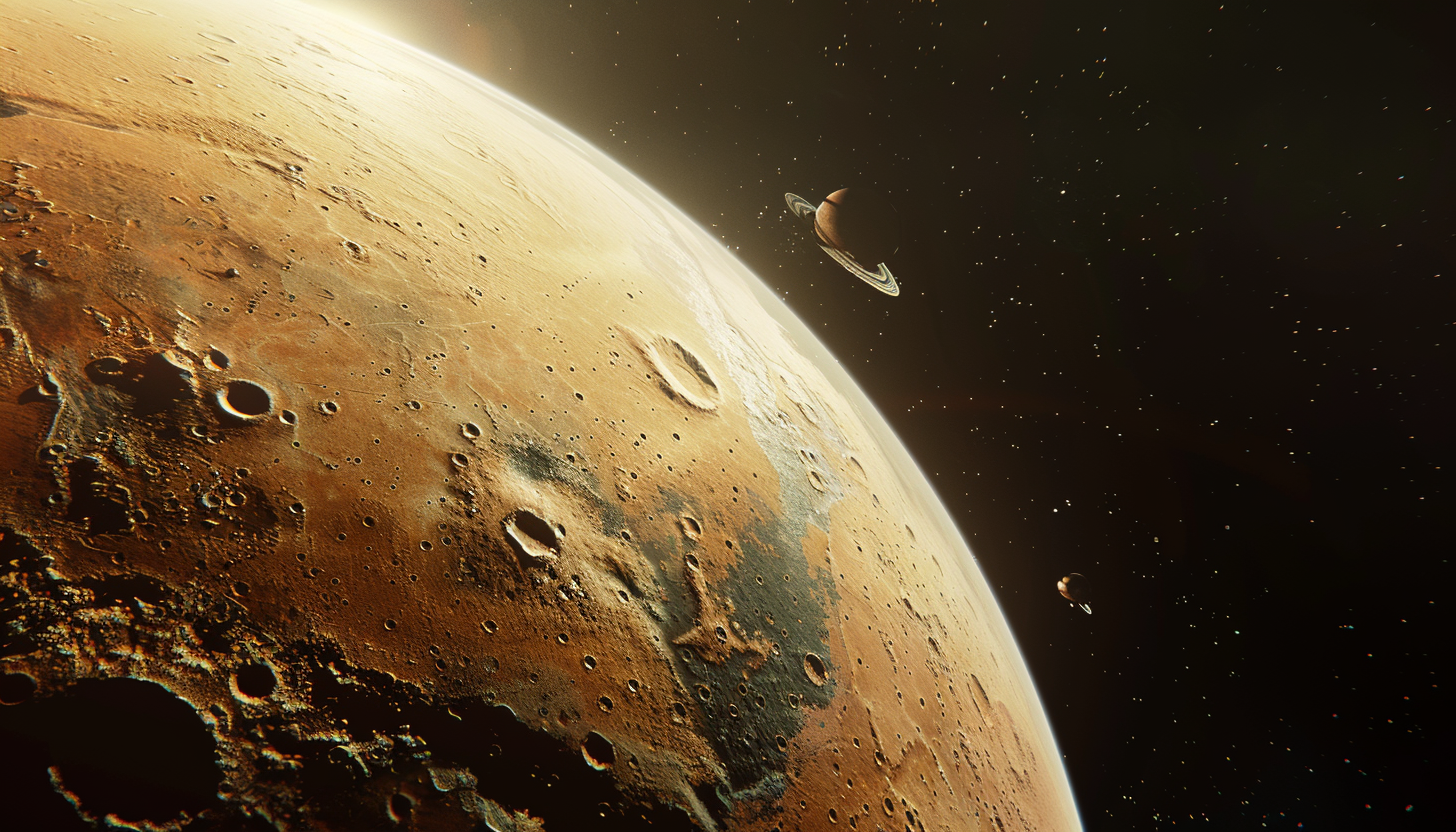5 Incredible Planet Mars Facts
Let’s explore 5 amazing planet Mars facts! Mars, the fourth planet from the Sun, has always captured human imagination and continues to be the subject of scientific exploration and study. Its dusty, red surface and potential for past life make it a fascinating object in our solar system. While Mars is often seen as Earth’s less hospitable cousin, it holds many secrets that are both incredible and somewhat eerie.
Our solar system is made up of 8 planets, including: Mercury, Venus, Earth, Mars, Jupiter, Saturn, Uranus, and Neptune. There are five officially recognized dwarf planets in our solar system: Ceres, Pluto, Haumea, Makemake, and Eris.
1. The Ghostly Sounds of Mars
One of the eeriest aspects of Mars is the sounds that permeate its thin, cold atmosphere. NASA’s InSight lander, which touched down on Mars in 2018, has equipped scientists with the ability to hear the Martian winds for the first time. These winds, along with other subtle sounds from the planet’s surface, create an otherworldly soundscape. The Martian wind sounds are eerie and haunting, giving a voice to the silent planet that is both fascinating and a little unsettling. This auditory glimpse into Martian life adds a new layer to our understanding and appreciation of this desolate world.
2. Mars’ Bleeding Soil
In a phenomenon that could be ripped from the pages of a science fiction novel, Mars exhibits patterns of what appears to be “bleeding” soil. In reality, this spooky effect is caused by the sublimation of frozen brine. When the conditions are right, the ice turns directly into vapor, leaving behind dark streaks on the Martian cliffs and crater walls. These features, known scientifically as recurring slope lineae, resemble the flowing of dark blood in the otherwise dry and barren landscape, adding a creepy element to the Martian terrain.

3. The Wandering Stones of Death Valley
In one of the more bizarre and unexplained phenomena linked indirectly to Mars, the sailing stones of Death Valley, California, have puzzled scientists and onlookers alike. These rocks, some weighing hundreds of pounds, mysteriously move across the sandy surface without human or animal intervention, leaving long tracks behind them. The reason this phenomenon is associated with Mars is due to the similar surface conditions, where scientists speculate that similar processes might occur due to ice, wind, or other environmental factors. The idea that Mars could have its own moving stones, trekking across its desolate landscapes, adds a layer of mystery and eeriness to the Red Planet.

4. Toxic and Deadly Sandstorms
Mars is notorious for its massive sandstorms, which can envelop the entire planet and last for months. These storms are not only incredibly powerful but are also made up of fine dust particles that are toxic to human lungs. If astronauts were to be exposed to Martian dust, it could be deadly without proper protective measures. The idea of a planet covered by a global, toxic storm paints a grim picture of a hostile world where visibility is near zero, and the air is filled with harmful particles, underscoring the challenges and dangers of exploring and potentially colonizing Mars.
5. The Great Valles Marineris: A Canyon of Darkness
Imagine a canyon so vast that it dwarfs the Grand Canyon—a gash in the Martian surface that could hide the entire length of the United States from coast to coast. This is Valles Marineris, the largest canyon in the solar system, stretching over 2,500 miles and plunging as deep as 7 miles in some areas. The sheer size and scale of Valles Marineris contribute to its eerie quality; it’s so large and deep that the bottom parts are shrouded in perpetual darkness. Exploring this mammoth canyon would be akin to venturing into Earth’s deepest ocean trenches, where sunlight never reaches and the secrets of Mars remain hidden in shadows.
Planet Mars Facts: Summary
Planet Mars, with its eerie sounds, bleeding soil, wandering stones, deadly sandstorms, and a vast canyon of darkness, stands as a testament to the mysterious and challenging nature of the solar system. These lesser-known facts not only highlight the complexities of Mars but also the potential for astonishing discoveries that lie in wait. As we continue to send rovers, landers, and, potentially, humans to the Red Planet, we are bound to uncover even more about this fascinating world. Mars, with all its mysteries and dangers, invites us to look beyond the known and embrace the unknown, forever changing our perception of what it means to explore other planets.

